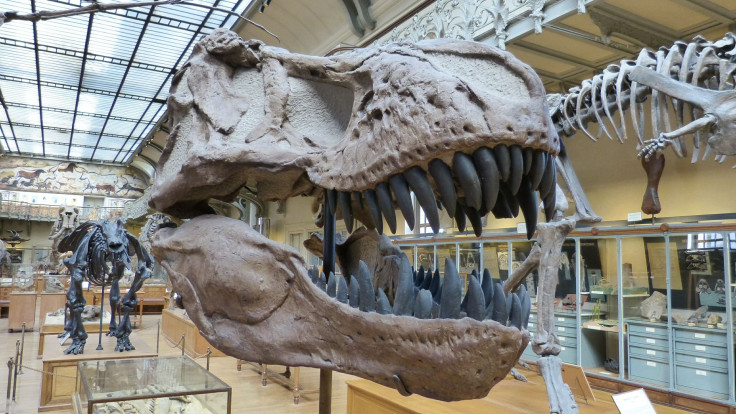The Problem With Jurassic Park Technology: Naming De-Extinct Animals

So you brought back a bunch of extinct animals from the dead — now what? The scientists in “Jurassic Park” were so busy fighting for their lives against the dinosaurs they had resurrected that they didn’t have time to worry about the havoc their creations would wreak on taxonomy. But some real-life experts are preparing for such a scenario in advance.
Science is getting closer to a “de-extinction” as technology improves for the different methods that could be potentially used, although none of them creates an exact copy of the extinct animal, just a nearly exact one. There’s back breeding, which involves slowly breeding an existing animal in such a way that it evolves into what resembles an extinct species, a sort of guided evolution. Cloning would use actual reproductive ingredients from the extinct animal to grow a new one in a surrogate uterus. And with genomic engineering, scientists would use DNA from the dead species to resurrect it, filling in holes with genetic material from closely related species to make a complete genome (the mad scientists in Jurassic Park used frog DNA to fill gaps in dinosaur genomes).
Read: Leo DiCaprio Tries to Save the 30 Vaquita Left Before They Go Extinct
There have been setbacks, however. Just recently a group of researchers appeared to debunk another lab’s previous findings of proteins from dinosaurs that had survived millions of years, along with the rest of their fossils. The proteins were collagen, an abundant and fibrous substance that gives bones and tissues their structure, and the first lab had claimed to find traces of it in the leg bone of a 68-million-year-old Tyrannosaurus rex fossil and in the fossil of a duck-billed dinosaur. That organic material would have been important to de-extinction efforts for those dinos but the discoveries were controversial, and last week a team of paleontologists published a study saying the organic material that had been found was really just lab contamination from ostriches previously studied there.
But in case imagination becomes reality, a group of German scientists published an article in the journal Science calling for a uniform and clear system for naming the creatures that could be brought back to life. That’s in part because conservation laws “largely depend on nomenclature.” If such laws governing how to protect animals are to have any teeth, they have to be specific.
“From a legal point of view, it will be crucial to clarify how de-extinct species will be classified, in particular in relation to their potential conservation status under national and international law,” the authors wrote.
They are proposing adding an extra tag to the scientific names of the de-extinct animals that reads “recr.” before their species name, to avoid confusion and be clear about their origins. An animal that is not as precise a copy of a de-extinct species would be given a new species name entirely, according to a report on the scientists’ plan. That, however, would also require a set of guidelines for classifying whether a new animal is close enough to the extinct original to warrant the additional tag or distinct enough for a new species name.
Read: The Extinct Animal Distantly Related to Cats and Dogs
It remains to be seen whether we will ever be able to bring animals back from extinction, but there’s at least hope that it’s not completely impossible. Even if there is no surviving collagen from 65-million-year-old dinosaurs, scientists have found collagen as old as 3.5 million years. Since the woolly mammoth went extinct only several thousand years ago, that prehistoric creature is well within that timeframe, as are other iconic Ice Age animals like dire wolves, saber-toothed tigers and mastodons.
© Copyright IBTimes 2024. All rights reserved.





















